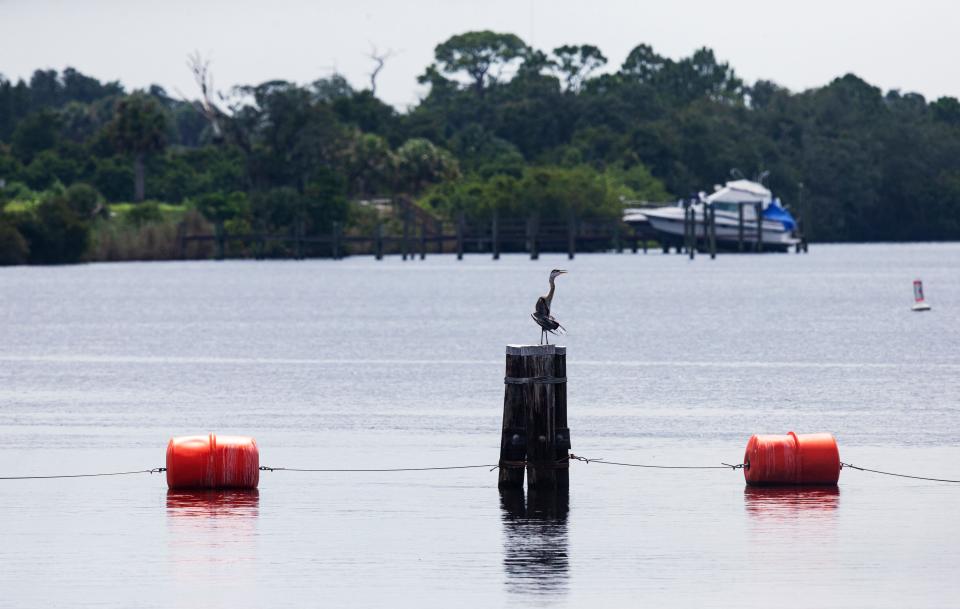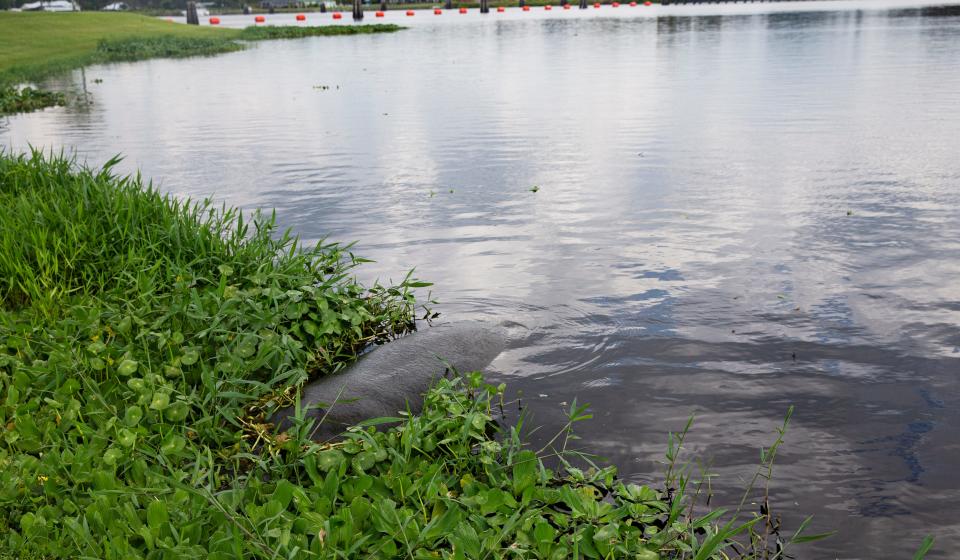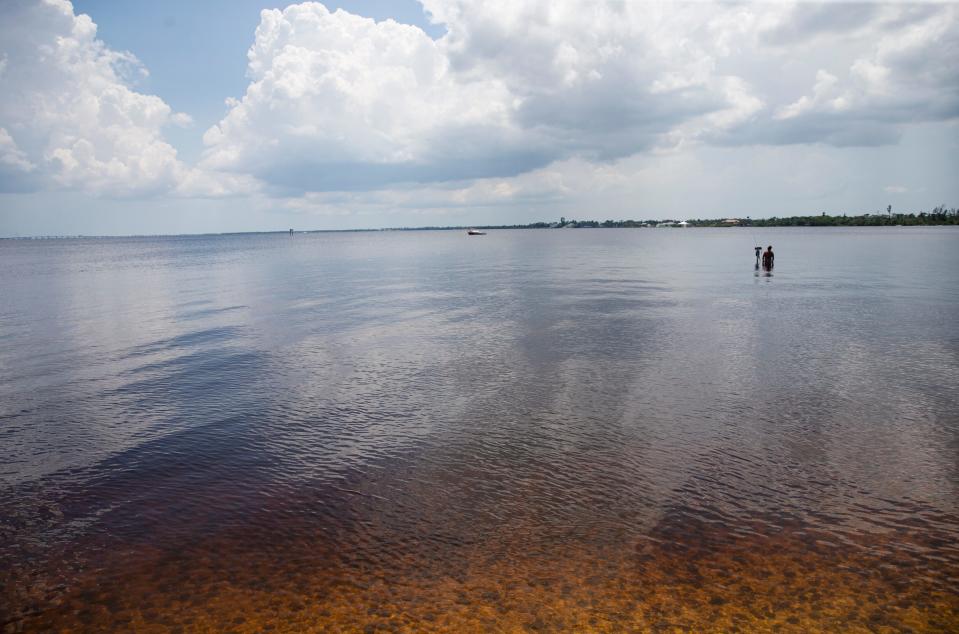Lake O levels are high. Why isn't the Army Corps releasing water our way?
The U.S. Army Corps of Engineers is standing pat on Lake Okeechobee management this week, sending none of the algae-ridden water to the east or west coasts.
Lake Okeechobee is high for this time of year at 14.6 feet, and there are nearly four months left in the rainy season.
To drain the lake, the Army Corps has historically sent water to the Caloosahatchee and St. Lucie rivers. Both systems were connected to the lake around a century ago to help drain the historic Everglades for farming and development.

"We're still targeting 2,000 cfs (cubic feet per second) at the W.P. Franklin Lock and Dam," said Savanah Lacy, chief of water management for the Army Corps' Jacksonville district (which includes all of Florida). "The local basin runoff has been exceeding those flows."
What does that mean?
The Army Corps is not releasing the nutrient-laden waters to the Caloosahatchee River at this point in the summer.
Toxic algae already in Fort Myers
Thats good because there is already a toxic algae bloom on the river in the downtown Fort Myers area, and adding Lake Okeechobee water, at this point, could make conditions worse.
"We're seeing a good bit of algae throughout Lake Okeechobee and throughout the canals," Lacy said. "And conditions are prime for a bloom. We've been working with the FDEP (Florida Department of Environmental Protection) and (South Florida) water management district to treat these blooms as needed."
Flows this month at the W.P. Franklin Lock and Dam ranged between 0 cubic feet per second and 5,000 cubic feet per second, according to Army Corps records.
Healthy flows for the river range from around 400 cubic feet per second to 2,800 cubic feet per second, as measured at the lock.

More: Study: Reef shark populations declining around the world
The Franklin Lock and Dam is the dividing line between the upper, freshwater portion of the river and the lower, estuarine portion.
Measuring flows here is important because it shows how much freshwater is entering the coastal system. Too little or too much water is bad for sea grasses and oyster beds ― the basis of the marine food chain.
Lake surface levels are high for this time of year
The surface of Lake Okeechobee Friday was at 14.6 feet above sea level and rising, according to South Florida Water Management District records.
That's 20.5 inches higher than the lake was at this time last year.
Heavy rains or a tropical storm or hurricane could force the Army Corps to make large-scale releases to at least the Caloosahatchee River.
The Caloosahatchee is much larger in size than the St. Lucie estuary, so it can take more lake discharges, water managers say.
Lacy said she's not sure when releases to the Caloosahatchee River will start this summer.
"It's pretty hard to tell," she said. "Things are very dependent on rainfall and any hurricanes or storms that we get. (But) we don't have any need in the immediate future to make releases."
What does the water look like?
The Caloosahatchee River estuary varies in water quality and clarity throughout the year.
"I'm seeing rain water from the tidal areas and we're seeing tannin water released from the mangroves," said Calusa Waterkeeper Codty Pierce. "The outgoing tides with the full moon, you see the exit ― it is mixing, but it seems to be mostly toward the end of the tides. During the day with strong incoming tides it looks pretty, but that's just the saltwater pushing it back.

More: What is chronic wasting disease? And what is CWD doing to Florida's deer?
Pierce said he thinks the bloom will expand considering warm water and air temperatures as well as plenty of nutrients flowing off the watershed.
"The next few weeks, the Fourth of July is when things start to mount," Pierce said. "It's probably going to happen within the next couple of weeks."
Connect with this reporter: Chad Gillis on Facebook.
This article originally appeared on Fort Myers News-Press: Algae update: No immediate releases from Lake O planned

